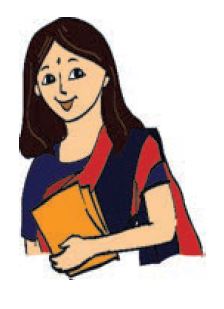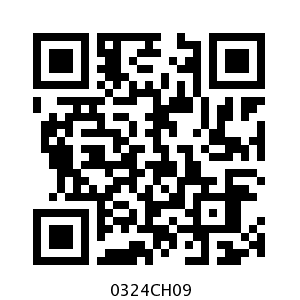Table of Contents
UNIT IX
Are there some things that grown-ups don’t let you do? Read about what this child feels.
Don’t Tell

There are lots of things
They won’t let me do —
I'm not big enough yet,
They say.
So I patiently wait
Till I’m all grown-up;
And I’ll show Them all,
One day.
I could show Them now
If they gave me the chance,
There are things I could do
If I tried.
But nobody knows,
No nobody knows, that I’m
Really a giant,
Inside.
Irene Yates
New words
enough, chance, giant, patient
Reading is fun
1. How old is the speaker?
2. Who are ‘they’ and ‘them’ in the poem?
3. What is the secret the speaker is hiding?
Talk time
1. Think of three things that ‘they’ won’t let you do.
2. What are the things you’d like to do when you are grown-up that you can’t do now?
Word building
1. Using the letters of the given word, make three words. One is done for you.
| blackboard | mother | vegetable | thousand | helicopter |
| Black |
|
|
|
|
| Board |
|
|
|
|
| Back |
|
|
|
|
2. Look at these words in the poem.
Don’t, I’m, I'll
Here are their full forms:
Don’t - Do not
I’m - I am
I’ll - I will
i. Now write the full forms of the following words.
Can’t _____
It’s _____
Isn’t _____
What’s _____
That’s _____
ii. Make sentences using the following
He’s
She’s
You’re
We’re
iii. Now write about two things you'll do when you grow up. You can begin like this:
When I grow up I'll ___________
_________________________
_________________________
Team time
Class Word Chart — How many new words have you learnt? Write down three words you have learnt so far. Write them down on a chart or blackboard. Tell their meanings to the class.
Say aloud
| giant | goose |
| jam | grey |
| gym | gold |
| June | gum |
Choose and tick the words with a 'j' sound
| a. | January | goose | gem | jam |
| b. | jacket | giraffe | grow | July |
| c. | giant | grapes | grey | June |
He is my brother

Once upon a time there was a small hill. A path went up the hill. It went through thick and lovely woods of pine and fir trees. People often walked on it to a holy place.
One day when the sun shone high in the sky, many people were seen climbing up the hill. They were climbing slowly and carefully.
A girl also climbed the hill with them. Her name was Meena. Meena was twelve years old. She carried a small boy on her back.

He was four years old. His hair was curly. His eyes were black and his face was as fresh as the morning dew.
As the sunshine danced through the trees, Meena climbed the hill slowly and steadily. Meena was happy. The boy was also happy.
A man in the group looked at Meena. He felt sorry for her. He asked her, “My child, why are you carrying a boy on your back? Don't you feel his load?”
Meena looked at him in wonder. She could not understand him. (Her brother was unable to walk). Meena asked, “Load? Of course not! He is my brother!”
Based on a story by Sanat Kumar Bhatt
New words
understand, climbed, holy, slowly, sorry, load
Reading is fun
1. Where were the people going?
2. What did the man say to Meena?
3. Why do you think Meena was carrying her brother?
Talk time
Choose the correct answer.
1. What went up the hill?
(a) a path,
(b) a street,
(c) a road,
(d) a rail line
2. What is the name of the girl in the story?
(a) Seema,
(b) Beena,
(c) Meena,
(d) Nina
3. How old was Meena?
(a)Ten,
(b) Twelve,
(c) Nine,
(d) Eight
4. How old was Meena's brother?
(a) Five,
(b) Four,
(c) Six,
(d) Seven
Let’s write
Fill in the blanks using the correct given words
(rat, sip, box, rug, cot, den, pit)
1. The boy fell in the _____.
2. I _____ hot milk.
3. The kid is in the _____.
4. My toy is in the _____.
5. The lion is in the _____.
6. The cat runs after the _____.
7. I sit on the _____.
1. Fill in the blanks with the opposite of the underlined word given in the sentence.
i. The rat ran in when the cat ran _____.
ii. The lion is big but the ant is _____.
iii. The giraffe has a long neck but owls’ are _____.
iv. The sun appears in the day and the moon at _____.
v. The tea is hot but the water is _____.
vi. Trees are tall but the bushes are _____.
vii. Ram was sad but Radha was _____.
Team time
1. What are the difficulties that a child who can’t see will face?
2. Would you help a child who can't walk to school?
3. How can you help such a child and make the child feel one of you?
Activity – A Game
Blindfold a child with a cloth. He/she must try to catch the other children. Whoever is caught has to be blindfolded next.
Let’s know these signs
Sign Language is a visual language, consisting of signs, gestures, finger spelling and facial expressions.
Children who cannot hear may use sign language for communication. Sign language uses the hands to send information and the eyes to receive them. It is a visual manual language system with its own sentence structure and word order. Sign language is a part of total communication method used with people who are hard of hearing. In addition to sign language the Total Communication method involves other modes of communication like lipreading, voice amplification, writing, gesture and visual imagery (pictures). Although using sign language is important for communication, it can also be an adventure for everyone.
Here are some words that you can learn in sign language. Show and say as seen in the pictures below
Sing
Right ‘‘open’’ hand, facing in touches the mouth and moves to the right like waving.
Dance
Both ‘‘zero” hands, facing out move from shoulder to front of chest alternately, twice.
Read
Both “open” hands, palms facing at chest level, move from side to side in a symmetric way.
Write
Act out as if writing on to the palm of the left hand.
Win
Right “thumbs-up” hand, move up to right shoulder from front of chest.
Lose
Right “thumbs-up” hand, moves from right shoulder to front of chest to end with thumb pointing down.
Sunrise
Right “bent five” hand, facing left, moves from the waist level on the right side, up above the head.
Sunset
Right “bent five” hand, facing left, moves from above the head to the waist level on the left side, and rests facing down.
Teacher's Page: UNIT IX
THEMES
- Growing up, expressing emotions and feelings.
SUGGESTIONS FOR CLASSROOM TEACHING
- Read the pre-reading questions aloud to introduce the theme of the poem. Let the children talk individually about something they want to do very much but which their adults won't let them do. You can then ask them to think about why adults seem to be behaving unreasonably and if there might be some reason behind it e.g. if a child wants to drive a vehicle, why can’t he or she do so?
- Explain to the class through examples how friends, brothers, sisters and family are very important in the life of a person.
- This Unit is a good opportunity to talk about special children, their needs and problems. It is important to tell the class that special children need our understanding and acceptance.
- Encourage children to guess the meanings of difficult words, before you explain.
- Discuss and help them with the activities. You may explain short forms of the words and their significance in our conversation e.g. Are – ’re, Will – ’ll. Listing of the contractions may be done on the blackboard.

- After this unit is completed children can tell the class about their ambitions i.e. what they want to be when they grow up.
For teaching sign language
- You can start with signing a few words. Repeat in different situations so that meaning is attached to your hand movements. Talk when you sign. Keep your language simple. Use appropriate facial expression with signs and speech.








